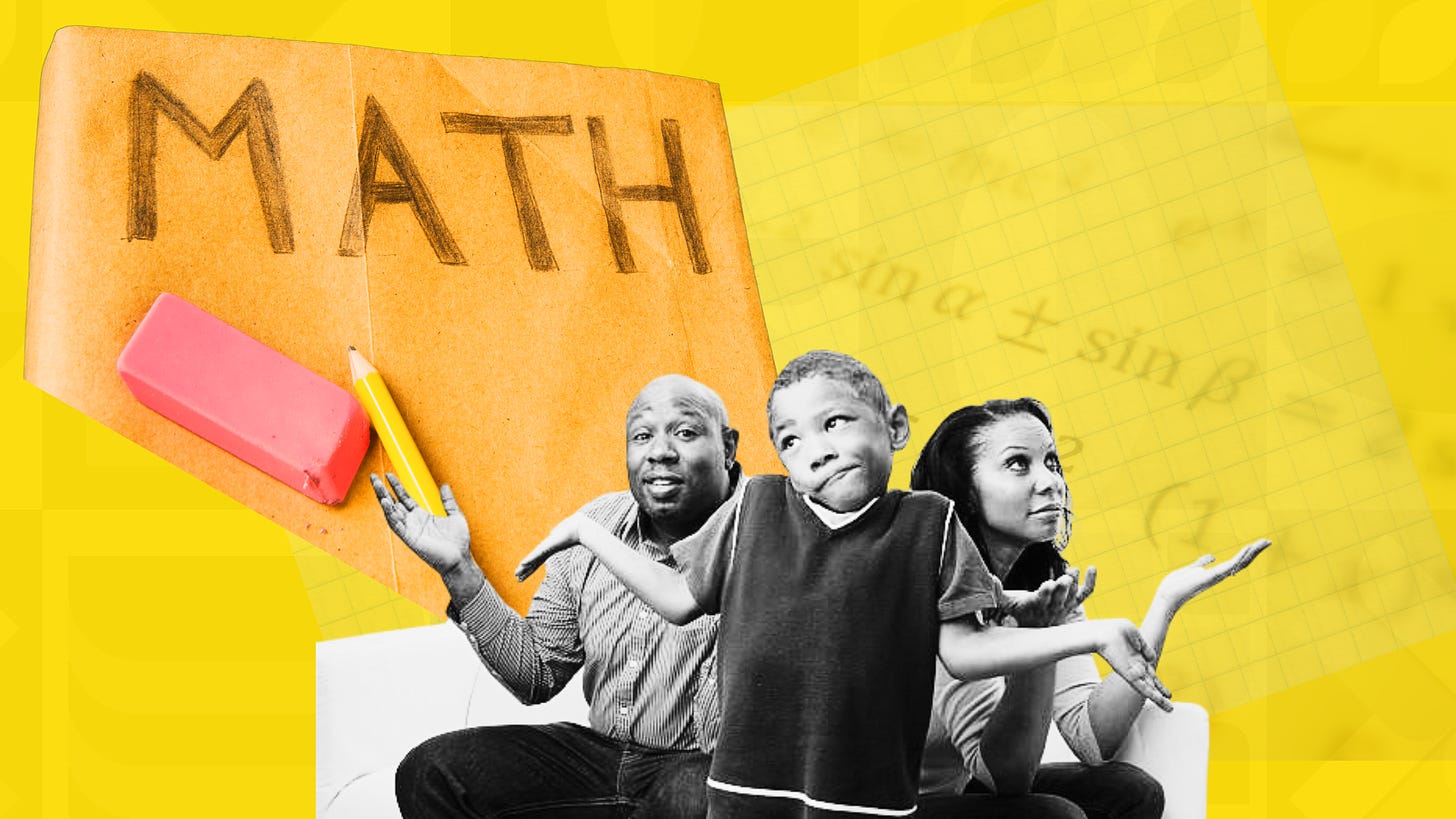Why Your Child’s Math Book Matters
As parents, many of us know too little about how districts choose the materials our kids need to succeed.
Okay, education civilians. This is to follow up on a previous post about how we all should care about the complex inner workings of our public schools. We’re not experts on all the sciences behind what and how our kids learn, but we should at least be curious students. We should be engaged as good citizens, stretching ourselves to understand the public's most significant investment in youth and the nation’s future.
Today’s topic: the importance of your local school district making smart decisions about the materials they use to teach your kids (and mine).
My expertise level on the issue: zero.
My primary resource is the Center for Education Market Dynamics, a heady organization that speaks to district leaders, not us mere mortals.
I fell down a rabbit hole, collected the information I could understand, and asked people I trusted to help me frame the issue.
Consider this information in my book report on a hard-to-understand issue that couldn’t be more important.
Why High-Quality Math Materials Matter for Our Kids
When we think about what helps our kids succeed in school, we often focus on teachers, classroom sizes, or even school funding. But there’s another crucial piece of the puzzle that doesn’t always get the attention it deserves: the quality of the materials our children use to learn, especially in math. The books, lessons, and activities they engage with daily in the classroom can significantly affect how well they understand and enjoy math.
So, why does this matter, and what should we, as concerned parents and community members, know about it?
The Textbooks Our Kids Use Are More Important Than We Think
Imagine your child trying to learn from a textbook that’s confusing, outdated, or doesn’t explain things in a way that makes sense to them. It’s frustrating, right? Research has shown that the choice of math materials can significantly affect how well students do in math. In some cases, using the right textbook can lead to improvements in test scores that are as impactful as having a great teacher. That’s huge!
But here’s the problem: not all textbooks are created equal. Some materials are much better at helping students grasp essential math concepts, while others fall short. This is why deciding which math curriculum to adopt is so crucial. It’s not just about picking a book—it’s about giving our kids the best tools to succeed.
What Does It Mean to Choose the Right Math Materials?
You might wonder what goes into choosing a math curriculum. It’s more than just picking something that matches state standards. Schools and districts need to think about whether the materials will really help all students, including those who learn differently or need extra support. They also need to ensure that the curriculum makes math engaging and understandable, assisting students to see math as a problem-solving journey rather than just a set of rules to memorize.
Another critical part of this process involves the right people in the decision. Teachers, school leaders, and even parents can provide valuable input to ensure the chosen materials fit the community’s needs well. When everyone is on the same page, the transition is smoother and helps ensure that the new curriculum will be used effectively in the classroom.
Why Is This Important for Our Community?
We all want the best for our kids, which means ensuring they get a top-notch education. High-quality math materials are a big part of that. When our schools choose the best possible curriculum, it helps close achievement gaps and ensures that all students, regardless of their background, have the chance to succeed.
Moreover, the right materials can make a huge difference for teachers, too. When teachers have access to well-designed resources, their job is easier, and they can focus more on teaching and less on trying to make subpar materials work. This leads to a better classroom experience for everyone.
What Can We Do as Parents and Community Members?
As parents and voters, we must be informed about these decisions and advocate for the best possible resources for our children. Here are a few ways you can get involved:
Ask Questions: Don’t be afraid to ask your child’s school or district about the math curriculum they are using. Please find out how it was chosen and whether it meets the needs of all students.
Get Involved: Many districts involve parents in the curriculum selection process. If the opportunity arises, consider volunteering.
Support Teachers: Recognize the importance of giving teachers the tools they need to succeed. Advocate for professional development and resources that help teachers make the most of new materials.
Stay Informed: Keep up with what’s happening in your local schools. Understanding the decisions being made can help you advocate more effectively for your child and your community.
The Bottom Line
Choosing the right math curriculum is one of our schools' most important decisions. It’s about giving our kids the best possible education and preparing them for the future. By understanding the importance of high-quality math materials and staying engaged with our schools, we can help ensure that every child in our community has the opportunity to succeed.





